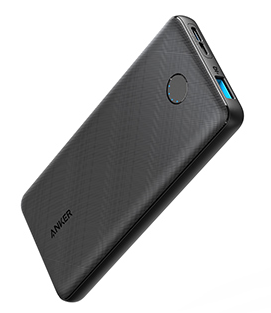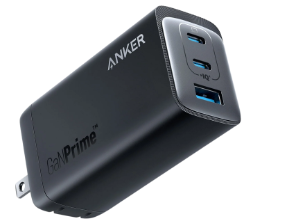
What to Look for in a Power Bank?
In today’s fast-paced, tech-driven world, staying connected is essential. Whether you’re traveling, commuting, or simply enjoying a day out, having a reliable power bank can be a lifesaver for your devices. However, with a multitude of options available in the market, selecting the right power bank can be daunting. To help you make an informed decision, this article outlines the key features to look for in a power bank, ensuring you find the perfect match for your charging needs.
Essential Features to Look for in a Power Bank
Capacity (mAh)
The first and foremost factor to consider when choosing a power bank is its capacity, usually measured in milliampere-hours (mAh), a higher mAh rating indicates that the power bank has a larger energy storage capacity, allowing you to charge your devices multiple times before needing to recharge the power bank itself. For example, a 10,000 mAh power bank can fully charge most smartphones about two to three times, while a 20000 mah power bank can provide even more charges. However, capacity isn’t the only thing to consider; you should also determine how much power you need based on the devices you use regularly.
Output Ports and Charging Speed
When choosing a power bank, examine the number of output ports it offers. A power bank with multiple output ports allows you to charge more than one device simultaneously, which can be particularly useful if you’re traveling with friends or family. Additionally, pay attention to the output power, which is typically measured in watts (W). Higher output power can translate to faster charging times, making your experience more efficient. Look for power banks that support Quick Charge or Power Delivery technology if you have devices that are compatible with these features—this can significantly reduce charging time and enhance convenience.
Size and Portability
Portability is another crucial factor to consider. The size and weight of the power bank will determine how easy it is to carry with you daily. If you’re looking for something to fit in your pocket or bag without adding much bulk, you may want to opt for a compact power bank. However, keep in mind that larger-capacity power banks may be bulkier. Therefore, it’s essential to find a balance between capacity and portability based on your lifestyle and charging needs. If you’re primarily using the power bank for long trips, a larger model may be worth the trade-off in size.
Build Quality and Durability
A power bank is an investment, so you want to ensure that it’s built to last. Check for durability features, such as shock resistance, water resistance, and high-quality materials. Many reputable brands offer power banks that are designed to withstand drops and spills, making them ideal for outdoor activities or travel. Additionally, look for power banks with built-in safety features such as overcharge protection, short-circuit prevention, and temperature control. These features will not only help protect your devices but also extend the lifespan of the power bank itself.
LED Indicators
Many power banks come with LED indicators that display the remaining battery life. This feature is particularly useful, as it allows you to know when it’s time to recharge the power bank itself. Some models even have smart indicators that can show the charging speed and status of connected devices. Having this information at a glance can prevent you from being caught off guard by a dead power bank when you need it most.

Price and Warranty
Price is always a consideration when purchasing any tech device. While it can be tempting to go for the cheapest option, remember that quality often comes at a cost. An inexpensive power bank may not provide reliable performance or durability, eventually costing you more in the long run. Look for power banks that offer a good balance between price and features, and check for warranty options offered by manufacturers. A warranty can provide peace of mind, ensuring that you’re covered for any manufacturing defects or issues that may arise.
Brand Reputation and Reviews
Finally, consider the brand reputation and read customer reviews before making a purchase. Established brands like Anker often provide better quality products and customer service. Reviews from other users can give you insights into the real-world performance and reliability of a power bank, helping you make a more informed decision.
Conclusion
Choosing the right power bank requires careful consideration of several key factors, including capacity, output ports, size, build quality, and safety features. By taking the time to assess your specific needs and preferences, you can find a power bank that not only meets your charging requirements but also fits seamlessly into your lifestyle. A reliable power bank can be an invaluable tool for staying connected in our increasingly mobile world, so invest wisely and enjoy the convenience of portable charging whenever and wherever you need it!




